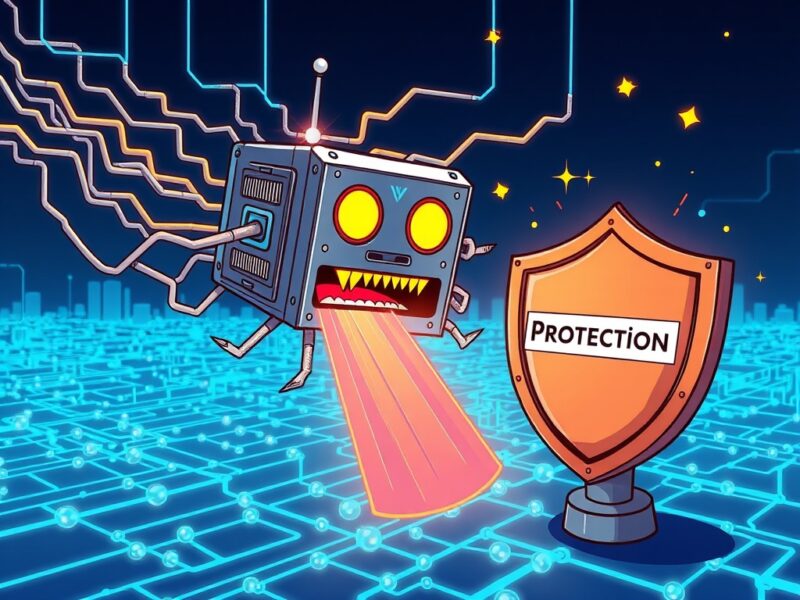Hurry, Limited Time to Buy: Discover the 7 Best New Meme Coins for Exponential Returns You Can’t Miss

That’s the meme coin paradox in 2025. From BullZilla ($BZIL), Pepe ($PEPE), and Snek ($SNEK) to a growing roster of quirky tokens, meme coins aren’t just surviving the bear scars; they’re dictating the bull chants.
The spotlight is currently on BullZilla’s live presale at Stage 1, Phase 2 (1-B). With a stage-based pricing model that increases by $100,000 every 48 hours, early buyers are already enjoying a 116% ROI. Momentum is surging, and hesitation is costly. For investors hunting the best new meme coins for exponential returns, every minute delay means a higher entry price.
-
BullZilla ($BZIL): The Apex Predator of Presales
BullZilla ($BZIL) is more than a meme coin. It’s a cinematic saga coded on Ethereum, designed to thrive on hype cycles while anchoring itself with real token mechanics. The presale, currently at Stage 1-B, is priced at $BZIL at $0.00001242, up from its initial $0.00000575. Over $100,000 has been raised, with 2 billion tokens sold in just two hours and $10,000 snapped up in the first 50 minutes. That’s not hype; that’s hunger.

The model is engineered to reward conviction. Each presale stage consists of four phases, meaning that Stage 1 progresses through these phases before advancing to Stage 2. With price hikes baked into both time and capital raised, the structure creates relentless urgency. A $40,000 entry at today’s price would translate into over 3.2 billion $BZIL tokens, projecting to more than $16.8 million at the launch price of $0.00527141. That’s an eye-watering 42,342% ROI if projections hold.
The magic here lies in how the presale isn’t just about buying tokens, it’s about buying into a story. Lore chapters unlock at each milestone, coupled with live token burns through the Roar Burn Mechanism. This ensures every new stage feels like the next episode of a show you can’t stop binging, and for those hunting the best new meme coins for exponential returns, the rewards aren’t just emotional, they’re financial.
Forging Passive Power: Staking and the HODL Furnace
Bull Zilla also roars beyond presale mechanics with its staking infrastructure, dubbed the HODL Furnace. Holders can lock their tokens for up to 70% APY, a figure unheard of in traditional finance. This transforms $BZIL into more than a trade; it’s a passive income generator for those with diamond claws.
Staking isn’t just about yield. It’s a psychological filter that strengthens the community. Weak hands get burned out, while loyal holders crystallize into a stronger core. Combine that with the referral-based Roarblood Vault, where users can earn extra tokens through direct recruitment, and you’ve got a system that incentivizes both conviction and expansion. For those searching for the best new meme coins for exponential returns, BullZilla isn’t simply a meme; it’s an ecosystem with a business model designed to roar louder the longer it survives.
-
Memecoin ($MEME): The Meta-Play Token
Launched as a self-referential experiment, Memecoin ($MEME) is literally the meme about meme coins. Its simplicity is its strength, pulling traders in with humor while securing listings on major exchanges.
What makes $MEME intriguing is its depth of liquidity and instant recognition. While it doesn’t push technical innovation, its brand identity as the “meta meme” gives it perpetual visibility. Investors view it as a benchmark for meme coin performance, making it a reliable indicator of market sentiment.
-
Andy ($ANDY): A Meme With Personality
In a sea of animal mascots, Andy ($ANDY) stands out by leaning on character-driven storytelling. Instead of a cute dog or frog, Andy is a meme personality tokenized. Its relatability resonates with holders, creating strong grassroots energy.
The lack of complex mechanics is deliberate. Andy thrives on simple tokenomics and heavy community banter. By humanizing the meme coin experience, it has created a tribe that identifies with the brand, positioning Andy as a long-tail survivor in the meme economy.
-
Fartcoin ($FARTCOIN): Comedy as Utility
Few tokens embrace absurdity like Fartcoin ($FARTCOIN). The project banks on raw humor, proving that the sillier the idea, the harder the community rallies. Its branding alone has generated viral waves across crypto Twitter and TikTok.
Behind the laughs, $FARTCOIN has committed to scheduled burns and liquidity injections, giving it more structure than skeptics expect. For traders, it offers exposure to humor-driven virality while still packing basic deflationary mechanics.
-
Apu Apustaja ($APU): The Cult Classic
Born from one of the internet’s most beloved meme templates, Apu Apustaja ($APU) merges nostalgia with speculation. The token thrives on its instantly recognizable character, creating emotional resonance among meme veterans.
What sets APU apart is its cult-like following. Holders view the token as more than an asset; it’s a cultural relic. This loyalty fuels consistent demand, ensuring APU remains relevant in the broader meme ecosystem.
-
Moo Deng ($MOODENG): The Piglet Phenom
The viral Thai piglet, Moo Deng, transitioned from cultural sensation to crypto darling with the launch of Moo Deng ($MOODENG). The token capitalizes on existing virality, proving once again that cultural memes transition seamlessly into financial instruments.
Although its tokenomics are lighter than others, the sheer brand power of Moo Deng has kept it trending. Every time the piglet resurfaces in the media, traders flock back to the coin, showcasing the power of cultural catalysts in crypto markets.
-
Snek ($SNEK): The Cardano Meme Challenger
Snek ($SNEK) is Cardano’s answer to Pepe and Doge. It has carved out a loyal community by embracing the simplicity of meme culture while anchoring itself in Cardano’s ecosystem.
Snek benefits from being one of the first widely recognized meme tokens on Cardano, making it both a pioneer and a cultural mascot for the network. Its early traction demonstrates how meme tokens can thrive outside Ethereum and BNB, diversifying the meme economy.

Conclusion
Based on the latest research, the best new meme coins for exponential returns are BullZilla ($BZIL), Pepe ($PEPE), Snek ($SNEK), Moo Deng ($MOODENG), and others like Andy and Apu. Each brings cultural energy to the table, but BullZilla separates itself with structured presale mechanics, staking incentives, and live deflationary burns.
Currently in Stage 1 Phase 2, BullZilla has raised over $100,000, sold billions of tokens, and delivered 116% ROI to early buyers. With projections of 42,000% upside and a staking model offering 70% APY, its ecosystem isn’t just designed to entertain , it’s designed to reward.
Don’t just laugh at the roar. Buy BullZilla today.

For More Information:
BZIL Official Website
rel=”sponsored nofollow”Join BZIL Telegram Channel
Follow BZIL on X (Formerly Twitter)
Frequently Asked Questions for Best New Meme Coins for Exponential Returns
How to find meme coin presale?
Follow official websites, Telegram groups, and blockchain explorers. Verify through audits and trusted trackers to avoid scams.
What is the best crypto presale to invest in 2025?
Currently, BullZilla ($BZIL) is leading with a live presale offering a high ROI, staking up to 70% APY, and implementing deflationary burns.
Which meme coin will explode in 2025?
Analysts expect strong moves from BullZilla, Pepe, and Snek, given their momentum and cultural impact.
Which meme coin is best to buy right now?
BullZilla’s live presale is the hottest entry today, with Stage 1-B already showing 116% ROI.
Do meme coins have a future?
Yes. Meme coins evolve with culture. Their survival depends on community strength, tokenomics, and timing.
Glossary of Key Terms
- APY: Annual Percentage Yield from staking returns.
- Burn Mechanism: Destroying tokens permanently to reduce supply.
- FOMO: Fear of Missing Out, driving impulsive buying.
- Presale: Early sale of tokens before exchange listing.
- ROI: Return on Investment, measuring gains.
- Smart Contract: Blockchain-based code executing actions automatically.
- Tokenomics: Token’s economic design.
- Utility Token: Provides functionality in its ecosystem.
- Whale: Large holder with significant price influence.
- Diamond Hands: Investors who hold despite volatility.
This publication is sponsored. Coindoo does not endorse or assume responsibility for the content, accuracy, quality, advertising, products, or any other materials on this page. Readers are encouraged to conduct their own research before engaging in any cryptocurrency-related actions. Coindoo will not be liable, directly or indirectly, for any damages or losses resulting from the use of or reliance on any content, goods, or services mentioned. Always do your own research.
The post Hurry, Limited Time to Buy: Discover the 7 Best New Meme Coins for Exponential Returns You Can’t Miss appeared first on Coindoo.
You May Also Like

Quantum Computing Security: Urgent Proposal Reaches SEC Crypto Task Force
The Ethereum PoS network entry queue has increased to 833,609, and the expected waiting time is over 14 days.
